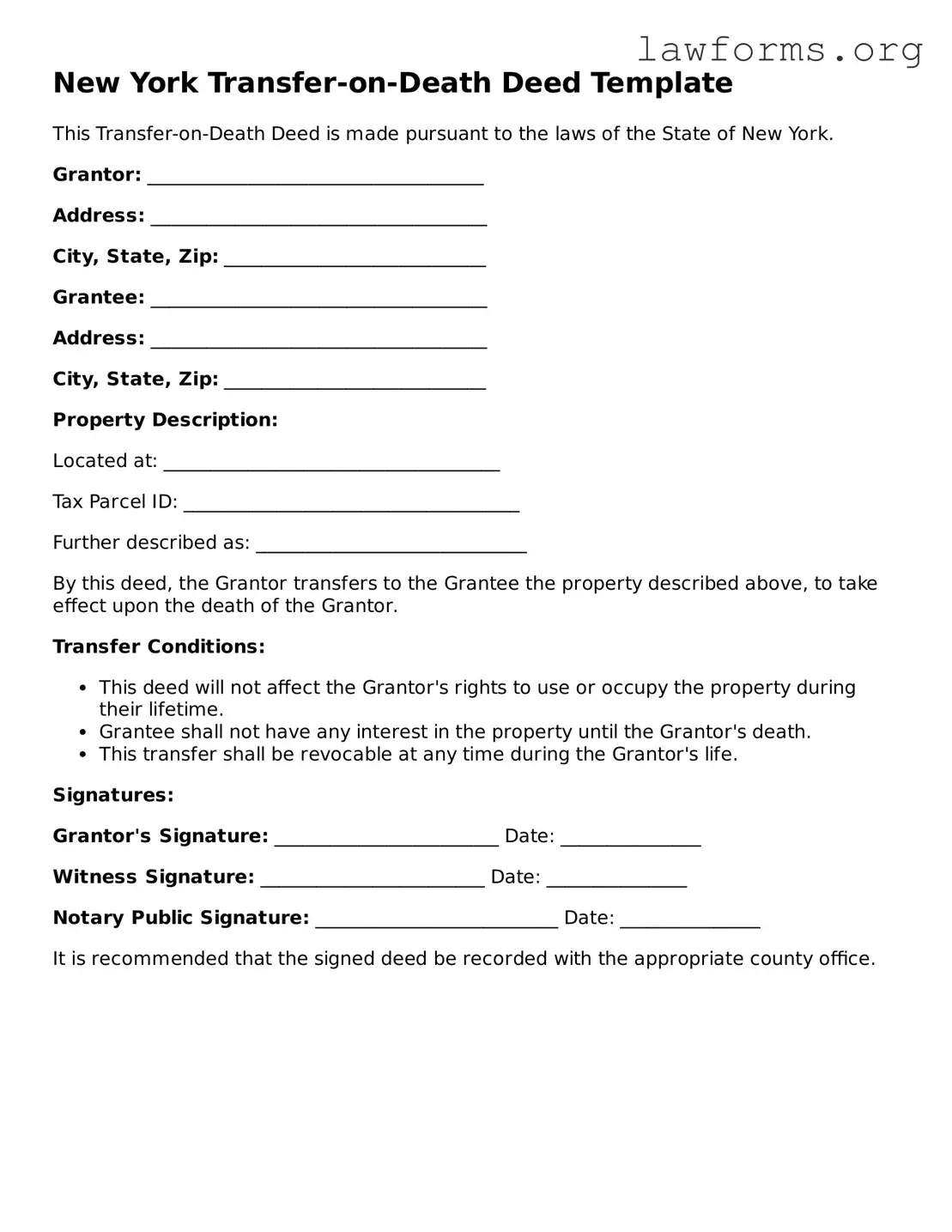New York Transfer-on-Death Deed Template
This Transfer-on-Death Deed is made pursuant to the laws of the State of New York.
Grantor: ____________________________________
Address: ____________________________________
City, State, Zip: ____________________________
Grantee: ____________________________________
Address: ____________________________________
City, State, Zip: ____________________________
Property Description:
Located at: ____________________________________
Tax Parcel ID: ____________________________________
Further described as: _____________________________
By this deed, the Grantor transfers to the Grantee the property described above, to take effect upon the death of the Grantor.
Transfer Conditions:
- This deed will not affect the Grantor's rights to use or occupy the property during their lifetime.
- Grantee shall not have any interest in the property until the Grantor's death.
- This transfer shall be revocable at any time during the Grantor's life.
Signatures:
Grantor's Signature: ________________________ Date: _______________
Witness Signature: ________________________ Date: _______________
Notary Public Signature: __________________________ Date: _______________
It is recommended that the signed deed be recorded with the appropriate county office.
